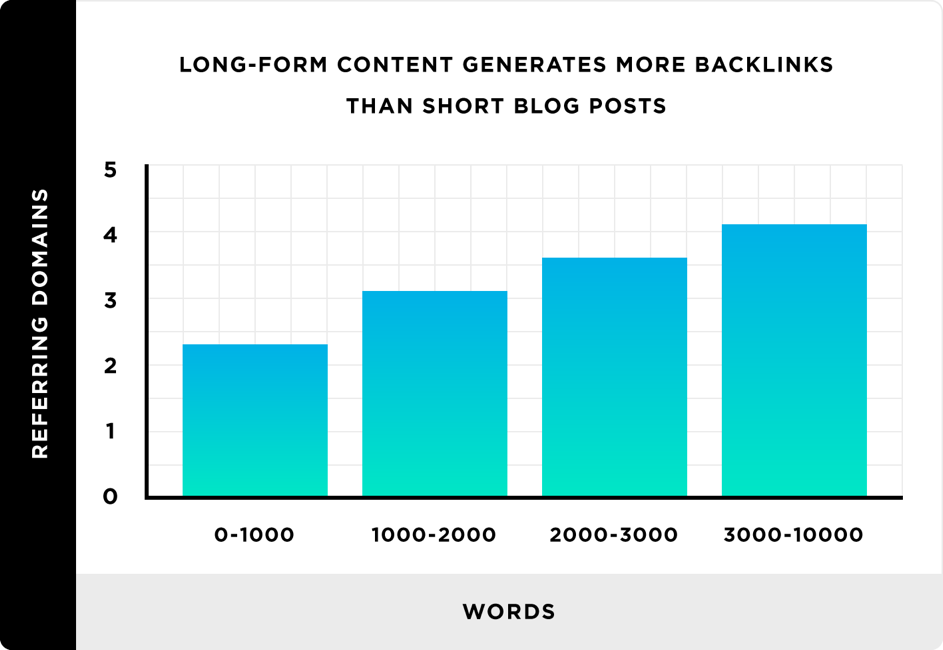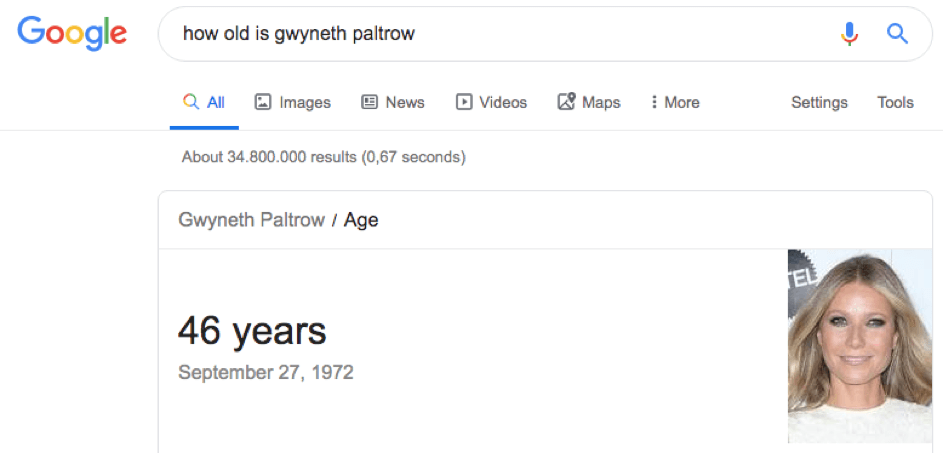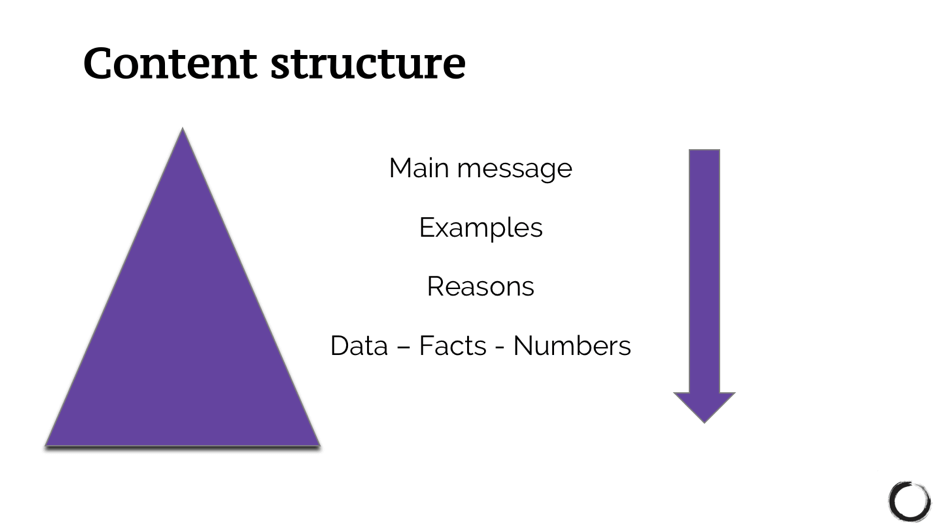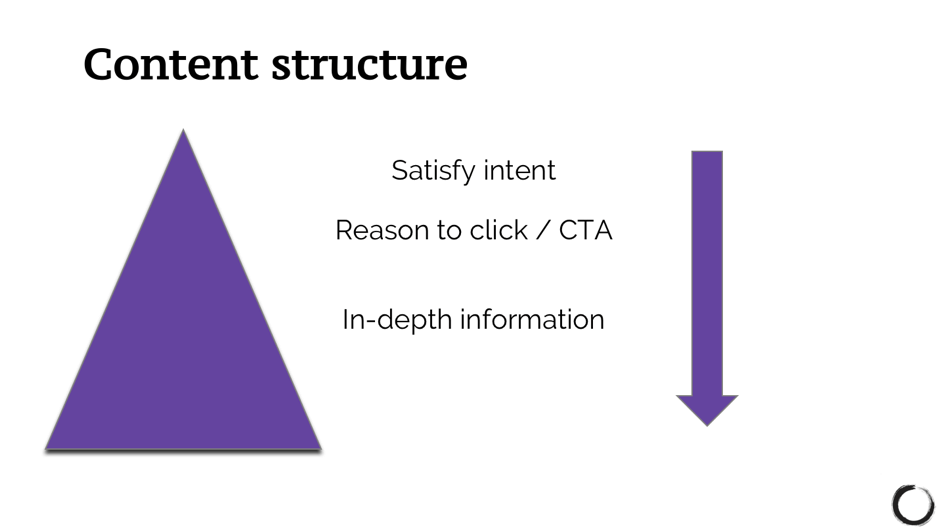17 Jul Revisiting Word Count in 2019
I don’t think every search query needs a skyscraper or ultimate guide.
The optimal length for an article in 2019 depends on two things:
- Satisfying the search intent.
- Creating the best content piece – with the goal to collect relevant links.
In this article, I will discuss the following SEO writing principles.
- It’s not a long-form article alone that makes you rank.
- Backlinks make you rank. And long articles tend to collect more links.
- Satisfy search intent by answering the question first.
- Google doesn’t like content fluff and dilution.
“Go with 2,000 Words & an Optimized H1”
That’s SEO advice in a nutshell.
But is that best practice, common knowledge, or urban myth?
In 2016, Brian Dean and Eric Van Buskirk analyzed 1 million websites with statistical analysis to determine the most important factors for successfully ranking an article.
One of their main findings was the length of the content, and they concluded:
“Based on SERP data from SEMrush, we found that longer content tends to rank higher in Google’s search results. The average Google first page result contains 1,890 words.”
But three years is a long time in the world of SEO. Especially with the algorithm updates of the last 12 months targeting content quality, authority, and search intent.
If we want to be successful in SEO and own Page 1 with our content:
Is bigger still better? Even in 2019 and beyond?
It’s Not Content Length That Ranks an Article – But the Backlinks That Are Correlated with Length
Ahrefs’s analysis of 2 million websites from 2018 supports the argument for longer content.
Their study concludes that the median length (the value separating the higher half from the lower half of a data sample, the “true” middle) of a top-performing article is at least 800 words.
But here is the interesting part:
In 2019, Dean and BuzzSumo reviewed 912 million blog posts and discovered that long-form content gets more backlinks, the number 1 ranking factor according to the study from 2016!
“Long-form content gets an average of 77.2% more links than short articles. Therefore, long-form content appears to be ideal for backlink acquisition.”


Ahrefs reported in 2018 that 91% of all pages never get any organic traffic. And that seems to be predominantly because they do not have any backlinks:
“It looks like 55.24% of pages don’t have even a single backlink. And 29.79% of pages have links from less than three websites.”
So, the impact of content length on rankings seems a two-step process rather than an “if longer, then ranks better” equation.
The path to ranking success looks like:
- Longer content leads to more links.
- More links lead to better rankings (and more organic traffic).
It seems what might be ranking the website is not so much the content length itself (though it for sure helps to be competitive with the Page 1 results), but firstly the amount of links the page received.
Guides, skyscrapers, pillar pages, and content hubs make the most interesting link targets, thus it is recommended to create the most conclusive, interesting, and in-depth piece of content on the web and run an extensive outreach campaign for it.
Making it sexy might not even need more words – but more targeting, better graphics, or detailed results of market research.
Answer Search Intent Effectively by Starting Your Article with the Most Important Information
Ahrefs’ advice on content length:
“Don’t shoot for a particular word count — just make sure you cover a topic in full. Whether that takes 500 words or 10,000, the key is that you are creating the best resource available for your target keyword.”
Which hints at another part of the equation:
What does it take to satisfy search intent?
For many years, SEO professionals have been trying to write longer content no matter the cost of usability. This led to fluffed-up super-long pieces instead of the word count that is relevant to your goals.
It might have also inspired Google to push the featured snippets – and giving answers instantly instead of providing a bad user experience with scroll marathons.


A classic example is the “how to lower bounce rate” query, which returns Page 1 results that talk about the importance of bounce rate for 700 words before even revealing the first tip on how to decrease it.
But if we needed an introduction on bounce rate, we would have Googled for it. These pieces clearly fail search intent.
Even though these pieces still rank top positions today (due to factors including age and links earned), I want to invite you to rethink content creation and meeting search intent.
I recommend turning your content structure upside down – and thus providing value to the user from the first second they arrive at your page.
Turn your SEO article into a newspaper article or executive summary:
Most important information first = Answer the question first

 Start with the main message.
Start with the main message.Then go into depth as the piece continues and detailed-focused users continue reading.
Secondly, give users a clear path to convert and make the next clicks.
This matters for your business, revenue and marketing goals, but also for the users who came to the website with a certain intention. Make it easy for them to find what they need.
This can include:
- Links/Read more to related articles.
- Sign-up for a whitepaper or how-to guide.
- Buy the product.


Fluffing Hurts the Content Ontology & Thus Your Keyword/Topic Targeting
The main reason I would like you to think about satisfying search intent is content ontology and the hierarchy between keywords and articles.
This is something that Google seems to play with in the last year where thin pages, duplicate content, and keyword cannibalization negatively affect your SEO results.
Getting search intent right will allow you to build a clean website architecture – which satisfies the Googlebot.
If we are mindlessly aiming for 2,000 words to write about a topic such as “apples” (as per best case practice), we will quickly realize that most writers and SEO pros tend to talk about “bananas” and “oranges” when running out of things to say about “apples.” They are trying to hit their target word count no matter what it takes.
This is deluding the keyword targeting of a page – and your ability to hit search intent.
Instead of making it clear to Google that this is the best page about “apples,” we are now confusing users and the search engine about the purpose and topic of the content piece.
We call it content cannibalization when we keep talking about “fruits” in general in order to forcefully extend our piece about “apples” and “kiwis” to hit target word count.
It is keyword cannibalization, when we confused Google so much that it doesn’t know which piece to rank for the query “apples” and it alternates between the two – hurting your overall ranking performance.

 The name of the game in 2019 is:
The name of the game in 2019 is:- One article per keyword (cluster) (e.g., one piece for “apple/apples”).
- Respect the relationship between your articles (ontology or content hierarchy). Everything about “fruits” in general goes on that parent page/category page.
- Make it clear for both users and search engines what the one concept/topic for every article is: Only talk about “apples” in the “apple” piece.
The goal to create the best content piece on “apples” will determine the content length.
How Articles Rank in 2019: Satisfying Intent, Appropriate Word Count & Backlinks
If we then keep in mind what Page 1 competitors are currently doing in terms of content length, satisfy search intent, give the best answer and invite users to convert – we not only have a created a piece of content that will rank well itself.
We have also created a piece that makes a great backlink target that will lead to successful rankings.
TL;DR
- Higher word count alone is not enough.
- Precise keyword targeting and avoiding content cannibalization is the foundation for a sustainable article aligned with the latest algorithm changes.
- Creating the most interesting article (with data, case studies, examples, research, and insights) will make the most promising backlink target.
- Keep in mind why users came to the page. Give them what they want first, satisfy intent – and then give them a reason to stay.
More Resources:
- What’s the Ideal Blog Post Length for SEO?
- Google: Word Count Does Not Equal Quality Content
- 10 Amazing Tips to Write High-Quality Blog Posts
Image Credits
All screenshots taken by author, July 2019
In-Post Graphics: Created by author, July 2019
Sorry, the comment form is closed at this time.